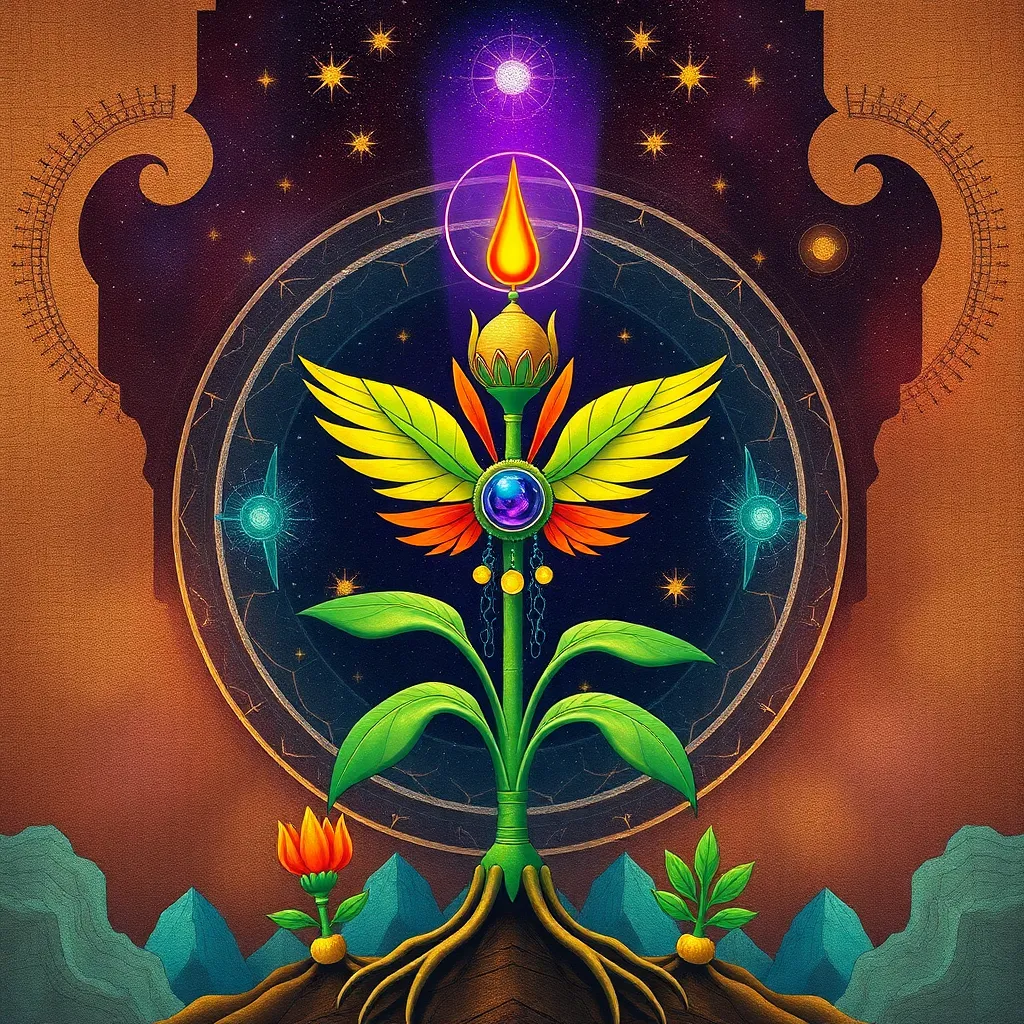The Sacred Plants of the Egyptian Cosmos
I. Introduction
Ancient Egyptian cosmology is a rich tapestry of beliefs and narratives that interweave the natural world with the divine. Within this intricate system, plants held a place of profound importance, serving not only as essential elements of daily life but also as symbols of spirituality and creation. This article explores the sacred plants of ancient Egypt, examining their roles in mythology, rituals, and the culture that revered them.
II. The Role of Nature in Egyptian Mythology
In ancient Egyptian mythology, nature was not viewed as a mere backdrop but rather as a living entity infused with divine presence. The connection between flora and deities was central to the Egyptian worldview, often depicted in myths that explained the origins of the universe.
- Connection between flora and deities: Many plants were associated with specific gods and goddesses. For instance, the lotus was linked with creation and rebirth, while papyrus signified life and sustenance.
- Symbolism of plants in creation myths: Plants were often depicted in creation myths, symbolizing life emerging from chaos. The lotus flower’s emergence from the primordial waters represents the birth of the sun.
- The balance of nature in the Egyptian worldview: Egyptians believed in maintaining harmony between the natural and the divine, with plants acting as mediators between humans and the gods.
III. Key Sacred Plants in Ancient Egypt
Several plants were considered sacred in ancient Egypt, each carrying unique meanings and associations.
A. Lotus (Nymphaea)
The lotus flower is one of the most significant symbols in Egyptian mythology.
- Symbolism of rebirth and creation: The lotus blooms anew each day, making it a powerful symbol of resurrection and the cycle of life.
- Association with the sun god Ra: The lotus was often depicted in art as a representation of Ra, the sun god, who was believed to rise from a lotus at the beginning of time.
B. Papyrus (Cyperus papyrus)
Papyrus played a crucial role in the daily life and spirituality of ancient Egyptians.
- Importance in daily life and writing: Papyrus was used to make writing materials, which were essential for record-keeping and literature.
- Spiritual significance in funerary practices: Papyrus was often included in tombs, symbolizing the journey to the afterlife and the continuation of life beyond death.
C. Cedar and Frankincense
These aromatic plants were vital for rituals and offerings.
- Use in rituals and offerings: Cedar wood and frankincense were commonly used in religious ceremonies, believed to purify spaces and please the gods.
- Connection to the afterlife: The use of these materials in mummification and burial rites highlighted their significance in ensuring safe passage to the afterlife.
IV. Rituals and Practices Involving Sacred Plants
The sacred plants of ancient Egypt played integral roles in various rituals and practices.
- Use of plants in temple rituals: Priests utilized sacred plants during rituals to connect with the divine, often using incense made from frankincense and myrrh.
- Offerings to the gods: Plants such as lotus and papyrus were offered to gods as tokens of respect and devotion during ceremonies.
- Role in funerary practices and mummification: Sacred plants were used in the embalming process, with cedar oil and other plant-based substances helping to preserve the body for the afterlife.
V. The Medicinal and Practical Uses of Sacred Plants
Beyond their spiritual significance, sacred plants held medicinal and practical uses in ancient Egyptian life.
- Healing properties of sacred plants: Egyptians utilized various plants for their healing properties, including the use of papyrus for treating wounds and other ailments.
- Everyday applications in ancient Egyptian life: Plants were integral in cooking, crafting, and textile production, showcasing their versatility.
- Preservation of knowledge about plant uses: Ancient manuscripts and hieroglyphics document the uses of various plants, reflecting a deep understanding of botany and medicine.
VI. Sacred Plants in Egyptian Art and Iconography
Plants were not only significant in rituals but also prominently featured in Egyptian art and iconography.
- Depictions of plants in tomb paintings and sculptures: Artists often depicted sacred plants in tombs, symbolizing rebirth and the afterlife.
- Symbolic representations in hieroglyphics: Plants such as the lotus and papyrus are represented in hieroglyphs, signifying their importance in the culture.
- Influence on modern interpretations of ancient Egyptian culture: The imagery of sacred plants continues to influence how we understand and interpret ancient Egyptian spirituality and art today.
VII. Modern Perspectives on Ancient Egyptian Sacred Plants
Recent archaeological discoveries and research have shed light on the significance of sacred plants in ancient Egypt.
- Archaeological discoveries and their implications: Excavations have uncovered ancient texts and artifacts that reveal the extensive use of sacred plants in daily and spiritual life.
- The enduring legacy of sacred plants in contemporary spirituality: Many modern spiritual practices draw inspiration from ancient Egyptian traditions, emphasizing the continued relevance of these sacred plants.
- Conservation efforts for historically significant plants: Efforts are being made to preserve the knowledge and species of plants that were once central to Egyptian culture.
VIII. Conclusion
The sacred plants of ancient Egypt represent a profound intersection of nature, spirituality, and culture. Their significance in mythology, rituals, and everyday life illustrates the Egyptians’ deep respect for the natural world and its divine connections. As we reflect on these ancient traditions, it becomes essential to appreciate and preserve the knowledge of sacred plants, ensuring that their legacy endures for future generations.




